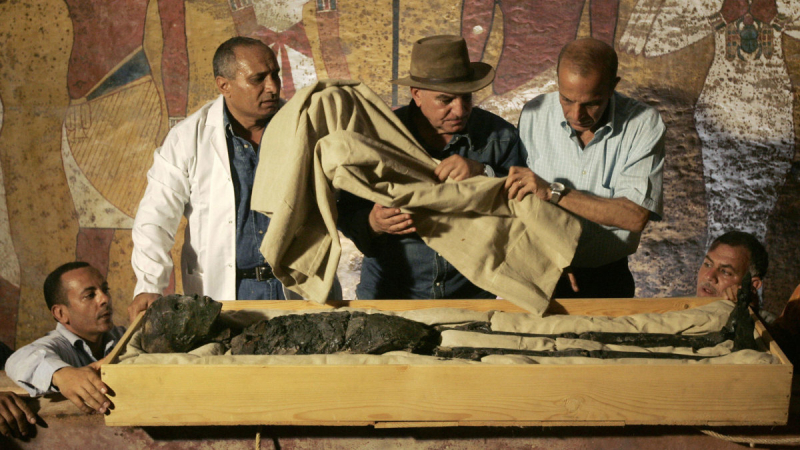He was buried in a second-hand coffin
Three golden coffins that fit snugly one inside the other like a set of Russian dolls contained Tutankhamun's mummy. The conjoined coffins were put in a rectangular stone sarcophagus as part of the funeral ceremony. Unfortunately, the outer casket turned out to be a little too large and its toes peered over the sarcophagus' edge, making it impossible for the lid to close. The coffin's toes were promptly sawn off after calling for carpenters. The parts were discovered at the base of the coffin by British archaeologist and Egyptologist Howard Carter more than 3,000 years later.
The three coffins that belonged to Tutankhamun shared a common design. They were "anthropoid" coffins, or human-form coffins, designed to resemble Osiris, the god of the dead, laying on his back while holding the crook and flail in his crossed arms. However, the style of the middle coffin was a little different, and the face on that coffin was distinct from the faces on the other two. It didn't resemble Tutankhamun's death mask either. Many Egyptologists now think that the mysterious "Neferneferuaten," whose name is documented in inscriptions and who may have been Tutankhamun's immediate predecessor, originally commissioned this middle casket and some of the other funeral goods Tutankhamun possessed. Neferneferuaten's whereabouts are unknown, as well as how Tutankhamun ended up in his or her coffin. This is also one of the most interesting facts about King Tut.












